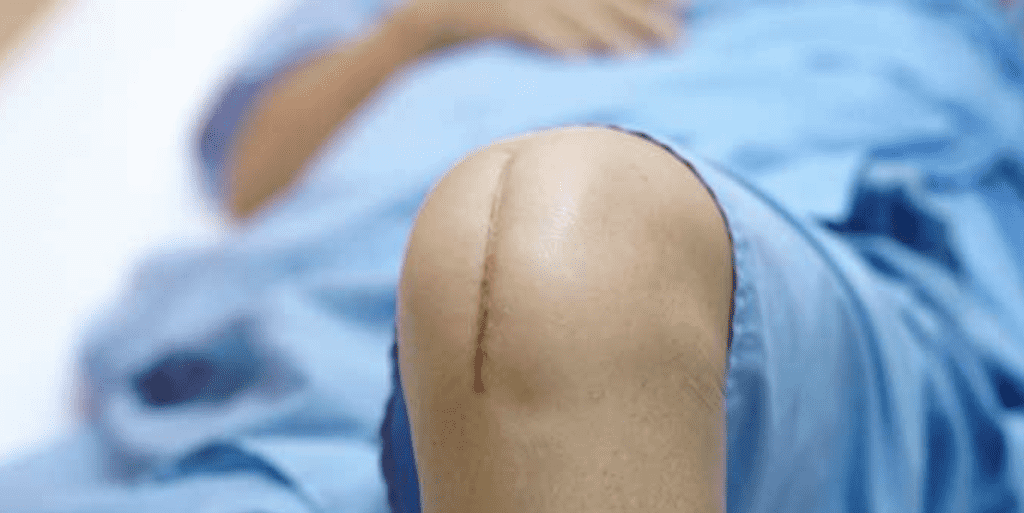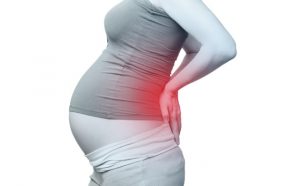The choice to undergo a total knee replacement is one that is best planned collaboratively with your orthopaedic surgeon and physiotherapist. One of the main points that we like to get across is that the surgery itself will help the structure of the knee, but the real hard work starts the moment you wake up from surgery. Within the first 24 hours (assuming there are no other complications), the hospital physiotherapist will assist you to get up out of bed and sit in a chair. This will progress over the following days to walking greater distances and may include steps/stairs prior to discharge. I always advise my clients (if I am lucky enough to see them pre-operatively) that the two main goals in the early stages postoperatively are to:
- manage your pain levels, and
- get your knee moving.
Days 1 – 5:
These are generally spent in the hospital. The imperative goals during this time are to gain control of your pain relief and start moving. Your physiotherapist and nursing staff will help with getting up out of bed, getting to the toilet/shower, and then increasing your activity as pain permits. Things that you will notice on waking include drainage tubes and catheters in place, wound dressings that may have ooze or dried blood on them and you may be attached to a patient-controlled analgesia (PCA) drip. These are fairly normal. Over the coming days, the catheter will be removed once you are up and about with crutches/walking frame, your dressings will be changed regularly (as required), the drainage tube will be removed and the PCA will be transitioned to oral pain relief.
I have seen many people in my time refuse or not take their pain relief because “they don’t like taking tablets”. My advice here is “hero’s don’t get good knees”. Your pain relief is not there primarily to make you comfortable, it is to allow you to move and complete your rehab! Comfort will come more rapidly once your knee is moving freely.
Days 6 – 14:
One of the important catchphrases I was taught on my orthopaedic rotation was that “if you don’t get the knee moving, you won’t get the knee moving”. There is only a small window of up to 6 to 10 weeks where efforts to restore full knee range of motion is vital to the successful outcome of the total knee replacement. If full knee flexion or extension is not achieved by this time, your orthopaedic surgeon may consider doing a manipulation under anaesthetic, but this has inherent risks of breaking structures that are not meant to be broken, including the bone around the prosthesis. Prevention is always better than cure in this case and a great way to prepare for post-operative rehabilitation is to undertake pre-operative “pre-habilitation”. The perfect way to do this is to undertake one of our GLA:D classes prior to surgery, which will teach you all about exercise and activity in the presence of pain. This will give you the best preparation and knowledge for the hard work you will need to undertake to have the most successful outcome from your knee replacement.
Generally speaking, this time period will have your staples removed (Day 10-14) and a review with your surgeon often occurs 2-week post operatively. Prior to this time, achieving a range of knee flexion from 0˚ (straight) up to 90˚ is targeted, as the staples and dressings rarely allow ranges greater than this.
Specific goals during this time are to continue to control your pain levels to allow movement and to consolidate your exercises and mobility. You will be discharged with exercises from the hospital physiotherapist to complete and these are vital to ensure your knee does not stiffen up or your mobility decreases.
Week 2 – Week 6
A referral, if not already undertaken, should be made to see your physiotherapist. This will allow for careful monitoring of your recovery and to progress your mobility and exercises to continue to get the best out of your new knee.
Goals and activities during this period include:
- Returning you to your pre-surgery mobility levels
- Get you to handle the knee.
- Progressing range of motion towards 135˚ knee bend (as tolerated) once staples come out.
- Commence higher level strengthening and endurance exercises as tolerated.
During my time, I have found clinically that encouraging you to “handle” your new knee, including moving the kneecap and helping it to bend and straighten, is a very big psychological step towards achieving great outcomes. It is amazing to see people overcoming the psychological boundaries and learned pain behaviours that had been in place, sometimes even prior to surgery, towards a knee that had been previously painful to touch and move. By touching and handling the knee, you are stimulating the normal sensory nerve fibres and re-establishing a normal sensory pattern in and around your previously painful knee. You may notice an area of numbness on the outside of your knee – this is common due to the superficial sensory nerve fibres going across the top of the knee being cut through in the main incision. This numbness may reduce over time.
Week 6 – 12 months
Driving is a big element of independence and a common question people ask – “when can I return to driving”. Generally we find that this is a minimum 6 – 8 weeks post-operatively. The most important things I look for prior to recommending someone can drive are the ability to move the foot between pedals and the ability to undertake emergency braking maneuvers.
Goals and activities during this period extend from the previous period and start to incorporate a return to your previous activities. These can include sporting hobbies (golf, bowls etc) and other activities including walking the dog etc. Exercises can be tailored to your specific requirements to ensure that your new knee leaves you with better function than prior to having your knee replaced.
Above all, your new knee should leave you with less pain and more function than prior to surgery. The take-home message I give all my clients is that a successful knee replacement isn’t simply gained from surgery, it is earned through dedicated hard work through the pre-habilitation and rehabilitation process.
For an even greater likelihood of hitting the ground running after surgery, contact us about joining one of our GLA:D classes so that you go into surgery with the best knowledge and understanding to achieve the greatest outcomes with your new knee.





